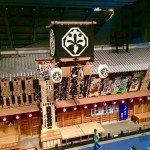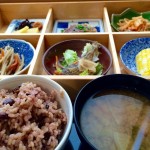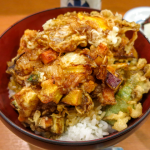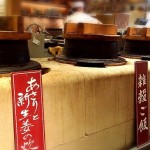Spectate a sumo wrestling match in the sumo capital of Japan

For a sneak peak into the world of Japan’s national sport, sumo, Ryogoku Kokugikan is the place to go. Also known as Ryogoku Sumo Hall, it is an indoor sporting arena that has been loved by the people of Japan for more than two decades.
Ryogoku is known as the “town of sumo” and out of the six official sumo tournaments in Japan, three are held here at the Ryogoku Kokugikan in January, May, and September. It should be noted that aside from these months, the venue is let for concerts and other events, and there are no sumo matches in session.
Sit at the Masuseki for an up-close view of the match
You must first buy tickets in order to enter the building. We have to admit, the ticket for masuseki, or tatami “box seat”, is not cheap, but if your budget is not too tight, we definitely recommend the masuseki for an up-close view of the match. The energy and the intense force of these Sumo matches are something that you can only experience in a live match.
Learn the history of sumo at the Sumo Museum (相撲博物館)
On the first floor of the Ryogoku Kokugikan is the Sumo Museum.
Here, there are exhibits of documents and items related to sumo. For anyone wishing to learn about the history of sumo or is interested in Japanese culture, we think this museum is worth visiting.
Also at the Sumo Museum, an English pamphlet, “The SUMO”, is sold. How was sumo born? What are the rules? What is written on the program for a sumo match? How do you enjoy sumo spectating? Even if you don’t know a single thing about sumo, the pamphlet will answer these basic questions and help you get into the world of sumo spectating. This pamphlet is only 100 yen so after getting one for yourself, it may be a good idea to buy a couple more for souvenirs :)
Try the “chanko”, also known as sumo stew!
After enjoying a game of sumo, we recommend trying out the “chanko-nabe”!
You might have never heard the word “chanko” before, but for the sumo wrestlers, it is a food that is critical for their weight-gain diet and their career as a sumo wrestler.
Chanko-nabe is essentially a Japanese stew that is usually eaten in vast quantities by the sumo wrestlers, in order to keep their bodies large and strong.
However, the content of the chanko-nabe differs entirely depending on the sumo heya, or the “stable” where the wrestlers train, sleep, and eat. Accordingly, the restaurants all prepare chanko-nabe with different tastes and different ingredients.
But despite the difference, all of them are certainly healthy and fulfilling. It is a dish that you can only find in Japan, and it is definitely worth trying out!
writer:Nozomi
Photos from
taka-khan
japan-magazine
littlegrayalien
tompei
world-tea
shiduku
pathee



















